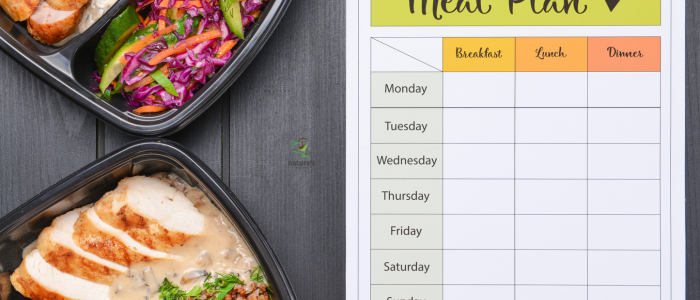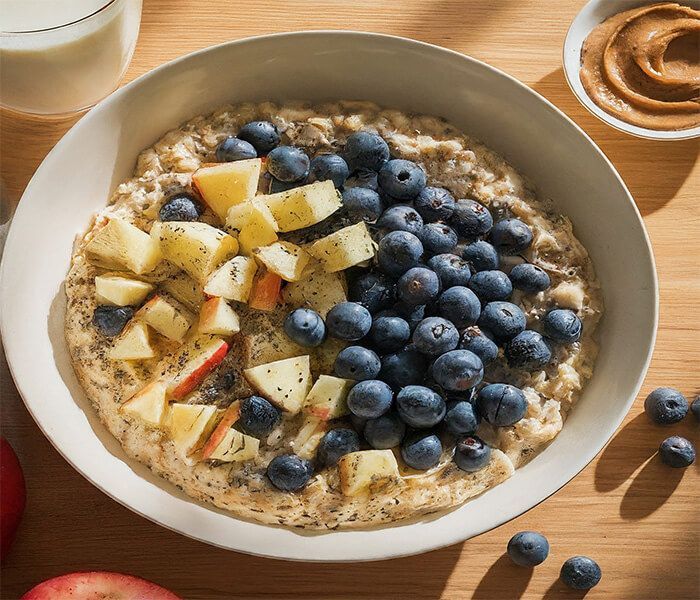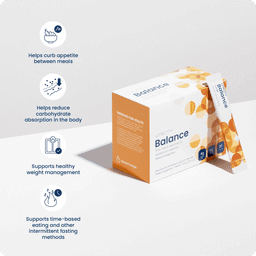Weekly Meal Plans for Prediabetes
Weekly Meal Plans for Prediabetes

Introduction
Learning that you have pre-diabetes can be a turning point, but it’s also a chance to embrace positive lifestyle changes. One of the most effective ways to manage pre-diabetes is through diet. By carefully planning your meals, you can control your blood sugar levels and potentially reverse pre-diabetes.
What is Pre-Diabetes?
Definition and Overview
Pre-diabetes is a condition where blood sugar levels are higher than normal but not high enough to be classified as type 2 diabetes. This stage is critical, as timely intervention can prevent the progression of diabetes. CDC
Risk Factors and Symptoms
Risk factors include being overweight, leading a sedentary lifestyle, having a family history of diabetes, and advancing age. Symptoms might be subtle but can include increased thirst, frequent urination, and fatigue.
Why Diet Matters
The Role of Nutrition in Blood Sugar Control
Proper nutrition plays a pivotal role in controlling blood sugar levels. Foods high in fibre, lean proteins, and healthy fats help maintain stable blood sugar levels.
Benefits of a Balanced Diet for Pre-Diabetes
Stabilises Blood Sugar Levels
A balanced diet helps to stabilise blood sugar levels by providing a steady supply of nutrients. Consuming foods that are high in fibre, lean proteins, and healthy fats can prevent spikes and dips in blood sugar. For example, whole grains like oats and quinoa release sugar slowly into the bloodstream, ensuring a more consistent energy level and reducing the risk of hyperglycaemia.
Reduces Insulin Resistance
Pre-diabetes is often marked by insulin resistance, where the body's cells do not respond effectively to insulin. A diet rich in whole foods can improve insulin sensitivity. Foods like leafy greens, berries, and nuts are packed with antioxidants and other nutrients that help reduce inflammation, a key factor in insulin resistance.
Supports Weight Management
Being overweight is a significant risk factor for developing type 2 diabetes. A balanced diet helps manage weight by promoting satiety and reducing the tendency to overeat. High-fibre foods like vegetables, fruits, and legumes make you feel full longer, reducing the need for frequent snacking and helping to control overall calorie intake. NHS
Enhances Heart Health
People with pre-diabetes are at a higher risk of cardiovascular diseases. A balanced diet that includes healthy fats from sources like avocados, nuts, and olive oil can improve heart health by lowering bad cholesterol levels (LDL) and increasing good cholesterol levels (HDL). Additionally, omega-3 fatty acids found in fatty fish such as salmon and mackerel can reduce triglycerides and lower blood pressure.
Boosts Overall Nutrient Intake
A well-rounded diet ensures you get a variety of essential vitamins and minerals necessary for overall health. For instance, magnesium found in leafy greens and nuts is crucial for regulating blood sugar levels. Vitamin D from fortified dairy products or sunlight exposure supports insulin function. A variety of nutrients works synergistically to enhance your body’s ability to process sugar and maintain a healthy metabolic state.
Promotes Gut Health
A healthy gut microbiome plays a vital role in metabolic health. Prebiotic and probiotic foods, such as yogurt, kefir, and fibre-rich vegetables, support the growth of beneficial bacteria in the gut. This balance can improve digestion, enhance nutrient absorption, and regulate blood sugar levels. A healthy gut also reduces inflammation, further aiding in the management of pre-diabetes. NHS
Improves Energy Levels
Stable blood sugar levels result in more consistent energy levels throughout the day. A balanced diet that avoids high-sugar and high-fat processed foods prevents the energy crashes that often follow sugary snacks or meals. Consistent energy levels can help maintain motivation for physical activity, which is crucial for managing pre-diabetes.
Reduces the Risk of Complications
Maintaining a balanced diet can significantly lower the risk of complications associated with pre-diabetes, such as the progression to type 2 diabetes and cardiovascular issues. By managing blood sugar levels and promoting overall health, a balanced diet acts as a preventive measure against these severe health problems.
Supports Mental Well-being
Blood sugar fluctuations can affect mood and cognitive function. A balanced diet helps maintain stable blood sugar levels, which can improve mental clarity and reduce the risk of mood swings. Foods rich in omega-3 fatty acids, such as fatty fish, flaxseeds, and walnuts, have been shown to support brain health and may help reduce symptoms of depression and anxiety.
Encourages Healthy Eating Habits
Adopting a balanced diet encourages long-term healthy eating habits. By focusing on nutrient-dense foods and avoiding processed and sugary foods, you can develop a sustainable approach to eating that supports overall health and well-being. These habits not only help manage pre-diabetes but also promote a healthier lifestyle for the future.

Setting Up a Weekly Meal Plan
Importance of Planning Ahead
Planning your meals in advance ensures you have the right ingredients on hand and helps you avoid impulsive, unhealthy eating.
Key Components of a Pre-Diabetic Diet
Include a variety of vegetables, whole grains, lean proteins, and healthy fats. Avoid processed foods, sugary drinks, and high-carb foods.
Daily Meal Breakdown
Breakfast: The Most Important Meal
Start your day with a balanced breakfast that includes protein, fibre, and healthy fats.
Examples: Greek yoghurt with berries and nuts, or a veggie omelette with whole-grain toast.
Lunch: Balancing Macronutrients
Ensure your lunch includes a mix of protein, fibre, and a small amount of healthy fats.
Examples: Grilled chicken salad with quinoa, or a lentil soup with a side of mixed greens.
Dinner: Light Yet Nutritious
Keep your dinner light but nutritious. Focus on lean proteins and plenty of vegetables.
Examples: Baked salmon with steamed broccoli, or stir-fried tofu with mixed vegetables.
Snacks: Healthy and Satisfying Options
Choose snacks that are low in sugar but high in protein and fibre.
Examples: Hummus with carrot sticks, or a handful of almonds.

Sample Weekly Meal Plan
Day 1: Monday
- Breakfast: Overnight oats with chia seeds and blueberries.
- Lunch: Grilled chicken Caesar salad (use a light dressing).
- Dinner: Baked cod with a side of roasted Brussels sprouts.
- Snack: Apple slices with almond butter.
Day 2: Tuesday
- Breakfast: Smoothie with spinach, banana, and protein powder.
- Lunch: Turkey and avocado wrap on a whole grain tortilla.
- Dinner: Quinoa stuffed bell peppers.
- Snack: Greek yogurt with a sprinkle of flaxseed.
Day 3: Wednesday
- Breakfast: Scrambled eggs with spinach and whole grain toast.
- Lunch: Chickpea salad with cucumbers and tomatoes.
- Dinner: Grilled shrimp with a side of sautéed asparagus.
- Snack: Mixed nuts.
Day 4: Thursday
- Breakfast: Cottage cheese with pineapple chunks.
- Lunch: Tuna salad with mixed greens and a lemon vinaigrette.
- Dinner: Chicken stir-fry with brown rice.
- Snack: Sliced bell peppers with hummus.
Day 5: Friday
- Breakfast: Avocado toast with a poached egg.
- Lunch: Lentil soup with a small whole grain roll.
- Dinner: Baked chicken with a side of quinoa and steamed veggies.
- Snack: Cottage cheese with sliced peaches.
Day 6: Saturday
- Breakfast: Smoothie bowl with mixed berries and granola.
- Lunch: Veggie wrap with hummus and a side of fruit.
- Dinner: Turkey meatballs with zucchini noodles.
- Snack: Baby carrots with guacamole.
Day 7: Sunday
- Breakfast: Whole grain pancakes with a side of berries.
- Lunch: Black bean salad with corn and avocado.
- Dinner: Grilled salmon with a side of roasted sweet potatoes.
Snack: A piece of dark chocolate and a handful of almonds.
Recipes and Preparation Tips
Breakfast Recipes
- Overnight Oats: Combine oats, chia seeds, and almond milk. Refrigerate overnight and top with berries in the morning.
- Veggie Omelette: Whisk eggs and pour into a heated pan. Add spinach, tomatoes, and mushrooms. Fold and serve.
Lunch Recipes
- Chickpea Salad: Mix chickpeas, diced cucumbers, cherry tomatoes, red onion, and parsley. Drizzle with olive oil and lemon juice.
- Turkey and Avocado Wrap: Spread hummus on a whole grain tortilla, add turkey slices, avocado, and spinach. Roll up and enjoy.
Dinner Recipes
- Baked Salmon: Season salmon with salt, pepper, and lemon juice. Bake at 190°C (375°F) for 20 minutes. Serve with roasted Brussels sprouts.
- Quinoa Stuffed Bell Peppers: Cook quinoa and mix with black beans, corn, and diced tomatoes. Stuff into halved bell peppers and bake.
Snack Recipes
- Hummus with Carrot Sticks: Blend chickpeas, tahini, garlic, lemon juice, and olive oil until smooth. Serve with carrot sticks.
Greek Yogurt with Flaxseed: Top Greek yogurt with ground flaxseed and a drizzle of honey.
Shopping List Essentials
Grocery List for a Pre-Diabetic Meal Plan
- Fresh fruits and vegetables
- Whole grains like oats and quinoa
- Lean proteins such as chicken, turkey, and fish
- Healthy fats including avocados, nuts, and olive oil
- Low-fat dairy products
Tips for Smart Grocery Shopping
Stick to the perimeter of the store where fresh produce, meats, and dairy are located. Avoid processed food aisles, and always check nutrition labels for hidden sugars.
Staying Consistent
Tips to Stick to Your Meal Plan
Prepare meals ahead of time and store them in portioned containers. Keep healthy snacks accessible to avoid reaching for unhealthy options.
Overcoming Common Challenges
Identify your triggers for unhealthy eating and have strategies to counteract them. Stay motivated by reminding yourself of the health benefits and setting small, achievable goals.
Hydration and Its Importance
The Role of Water in Blood Sugar Regulation
Staying hydrated helps your kidneys flush out excess sugar through urine. It also helps maintain healthy blood volume and circulation.
Best Hydration Practices
Drink at least 8 glasses of water a day. Avoid sugary drinks and limit caffeine intake. Infuse your water with slices of lemon, cucumber, or mint for a refreshing twist.
Physical Activity and Diet
Integrating Exercise with Your Meal Plan
Regular physical activity helps improve insulin sensitivity and lower blood sugar levels. Aim for at least 30 minutes of moderate exercise most days of the week.
Benefits of Regular Physical Activity
Exercise helps with weight management, boosts your mood, and strengthens your heart and muscles. It also enhances your overall well-being.
Monitoring Progress
How to Track Your Blood Sugar Levels
Use a glucometer to check your blood sugar levels regularly. Keep a log of your readings and note any patterns or changes.
Adjusting Your Diet Based on Results
If your blood sugar levels are consistently high, review your diet and make necessary adjustments. Consult a healthcare professional for personalised advice.
Consulting with Professionals
When to Seek Help from a Nutritionist or Doctor
If you're struggling to manage your diet or blood sugar levels, seek advice from a nutritionist or doctor. They can provide tailored guidance and support.
Benefits of Professional Guidance
Professional guidance ensures you receive accurate information and effective strategies for managing pre-diabetes. It also provides accountability and support.
What foods should I avoid with pre-diabetes?
Avoid sugary drinks, refined carbs, processed foods, and high-fat foods. Opt for whole foods and balanced meals.
Can I reverse pre-diabetes with diet alone?
Diet plays a crucial role, but combining it with regular exercise and a healthy lifestyle offers the best chances of reversing pre-diabetes.
How often should I eat to manage my blood sugar?
Eat regular, balanced meals every 3-4 hours to maintain stable blood sugar levels. Avoid skipping meals.
Are there any supplements that help with pre-diabetes?
Some supplements, like chromium and magnesium, may help manage blood sugar levels. Always consult a healthcare professional before starting any supplement.
Is it okay to have occasional treats?
Yes, occasional treats are fine. Just be mindful of portion sizes and choose healthier options when possible.
Conclusion
Managing pre-diabetes through diet is both achievable and rewarding. By planning your meals, staying hydrated, and integrating physical activity, you can control your blood sugar levels and improve your overall health. Stay consistent, monitor your progress, and don't hesitate to seek professional help if needed.










